BIAN Delivery Practice
Delivery Methodology
An overview of a brief Delivery Methodology followed within our BIAN Delivery Practice. From Service Domains, APIs Definition to Architecture, Platform and Delivery, all of these steps are to be handled with Professionalism.
BIAN DELIVERY METHODOLOGY
BIAN Delivery Methodology
Our team of professionals with expertise in Software Development & Delivery. We approach the delivery of BIAN Service domains and APIs in several key stages, with focus on complete implementation.
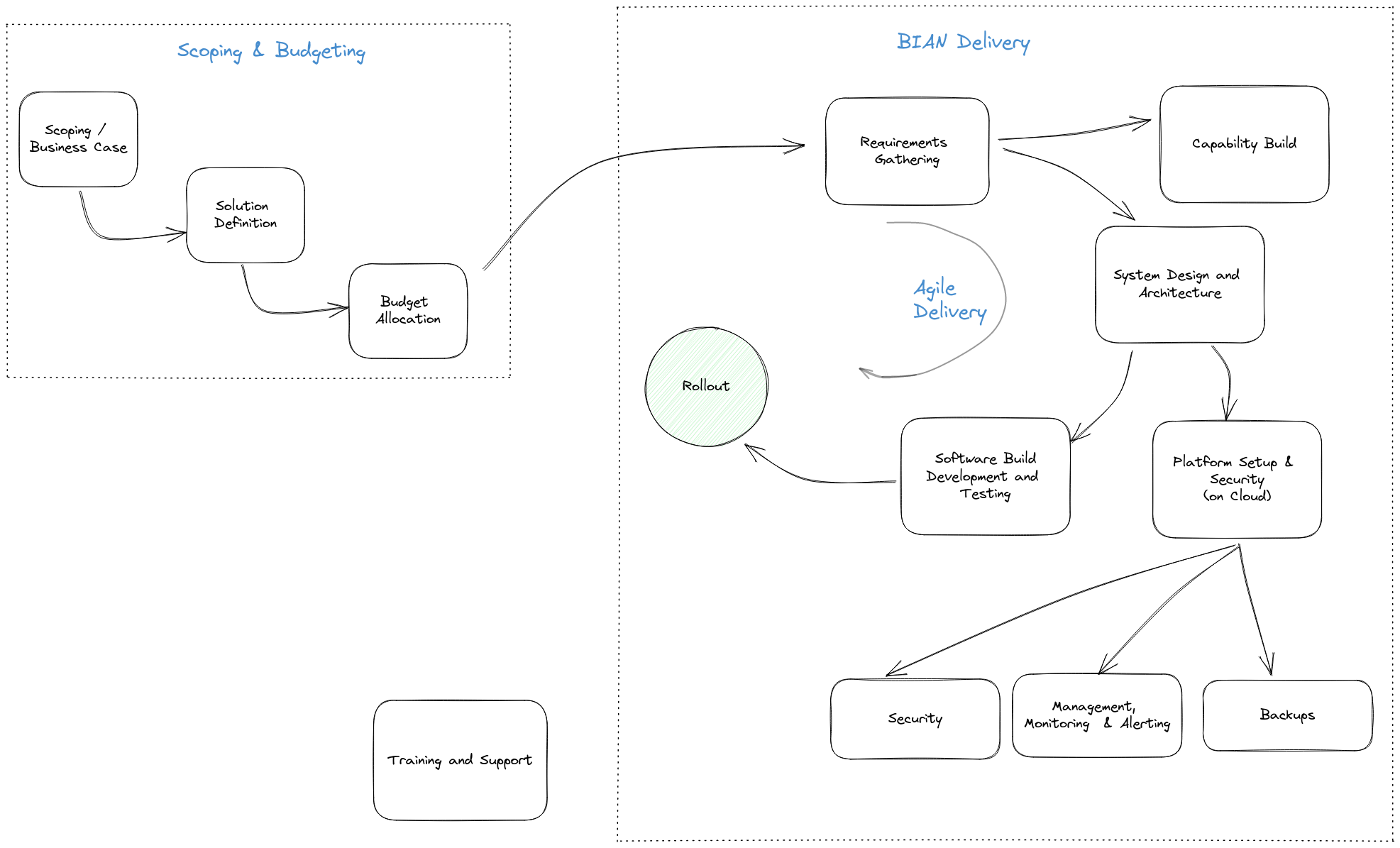
BIAN Program Planning
{Pre} Project Planning
Scoping & Business Case Definition
Scoping is a critical process in project management that sets the foundation for successful project delivery. It involves defining and documenting the project’s objectives, deliverables, constraints, and assumptions. Scoping ensures that all stakeholders have a clear understanding of what the project entails, its boundaries, and the expected outcomes.
We create a Requirements & Scoping Document (RSD) as the outcome.
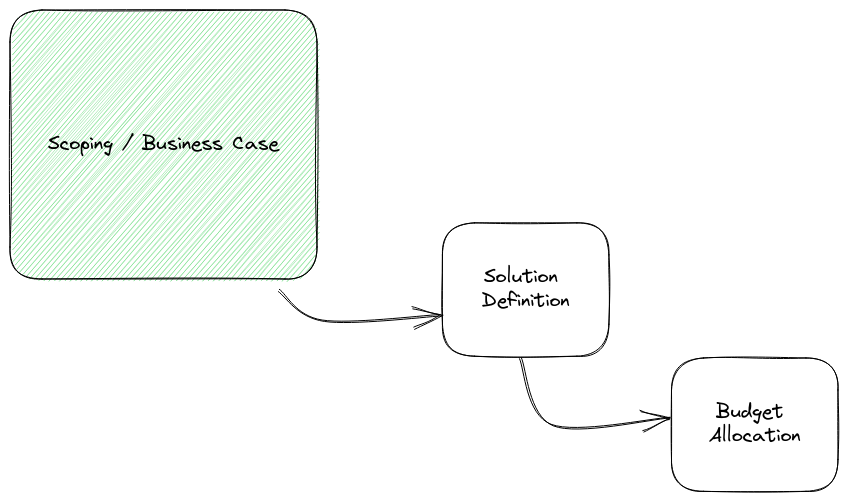
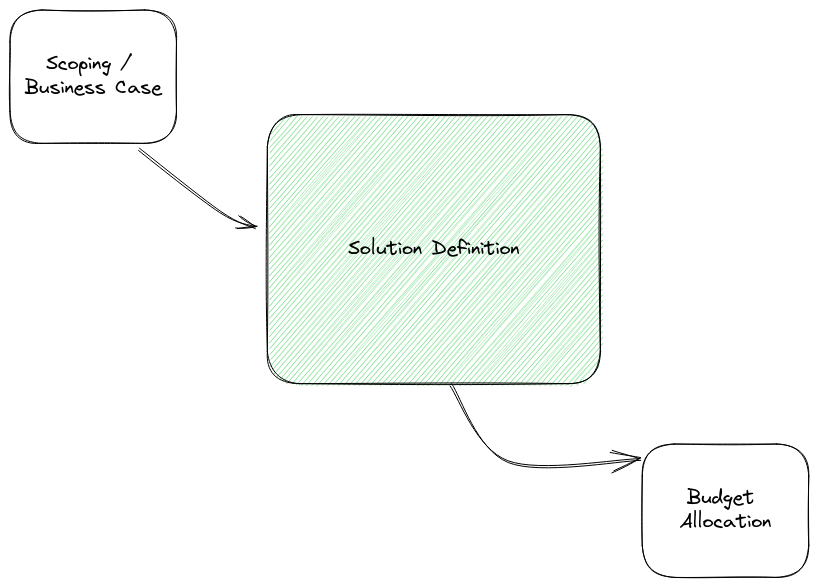
Solution Definition
Solution Definition phase ensures that the team collaborates with stakeholders to define and document the solution that will address the identified business needs / challenges. It involves – analyzing requirements – Business & Technical, evaluating options, and narrowing down to the the optimal solution, undertaking PoCs / PoVs or Pilots as applicable. Once completed – potential risks, dependencies, and project constraints & outcomes are known, allowing Business to plan Operations accordingly.
We create a SDD (Solution Design document) as outcome of this phase.
Budgetting & Feasibility
Budget Allocation involves allocating financial resources to different components and activities within the project. Typically handled by Project / Programme managers along with finance controller, costs and allocations associated with various aspects of the project, including personnel, materials, equipment, licenses, and any external services or vendors are quantified, along wtih sufficient Contingency into each of these buckets. Labour rates, market prices, and any contingencies or uncertainties drive this activity.
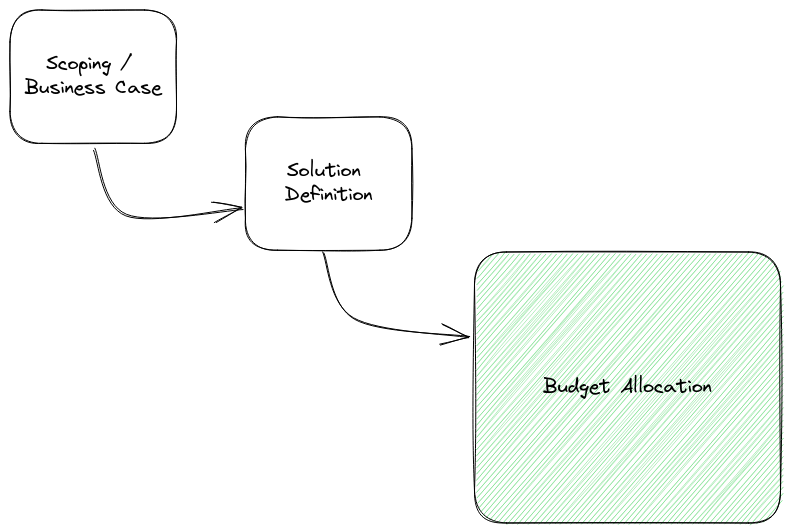
BIAN Delivery Methodology
Delivery Methodology
Requirements Gathering
Business and Technology Requirement analysis is done to gather and analyze software requirements. We believe that understanding unique customer needs is crucial to delivering a successful solution. Our experienced consultants will collaborate with you to ensure that all requirements are thoroughly documented and clearly defined.
RSD Document above will be further refined at this stage to add detailed requirements, NFRs, business impacts or any other factors affecting Design.
This is typically delivered as a Agile phase / scrum.
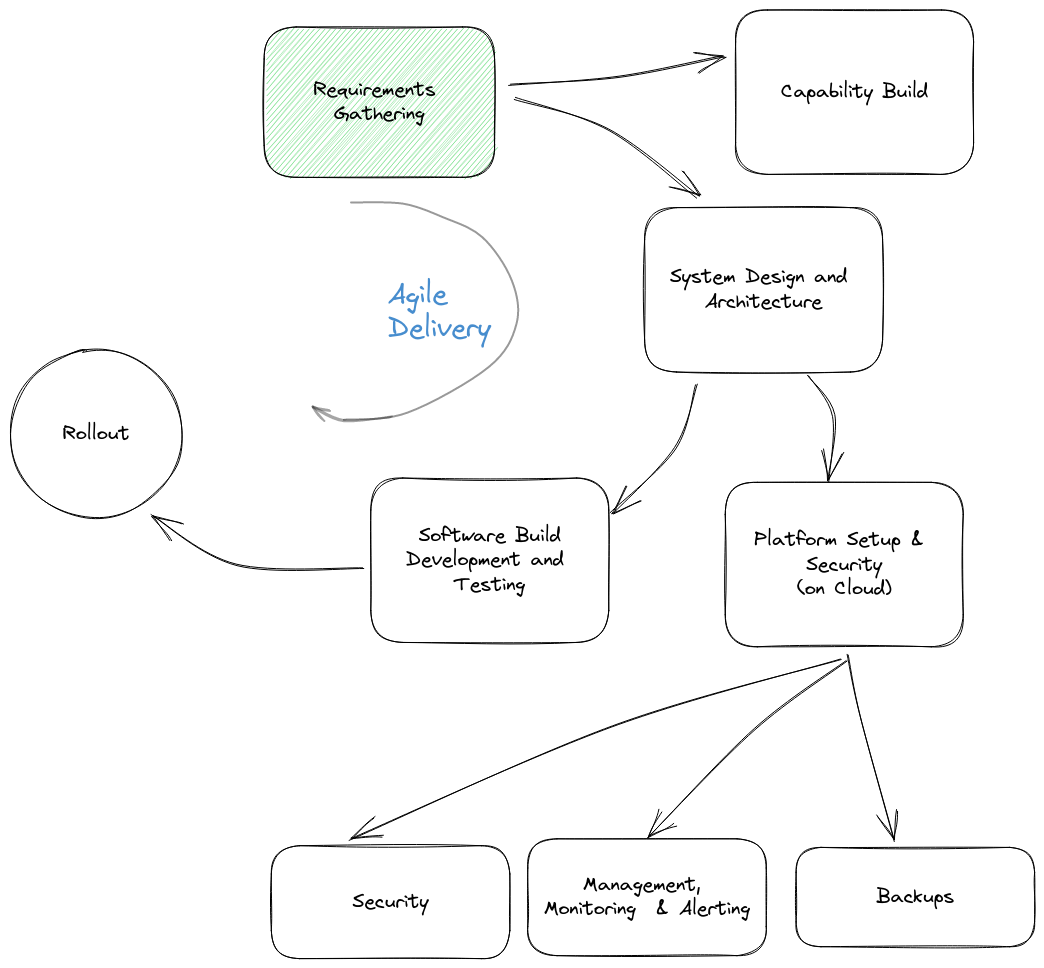
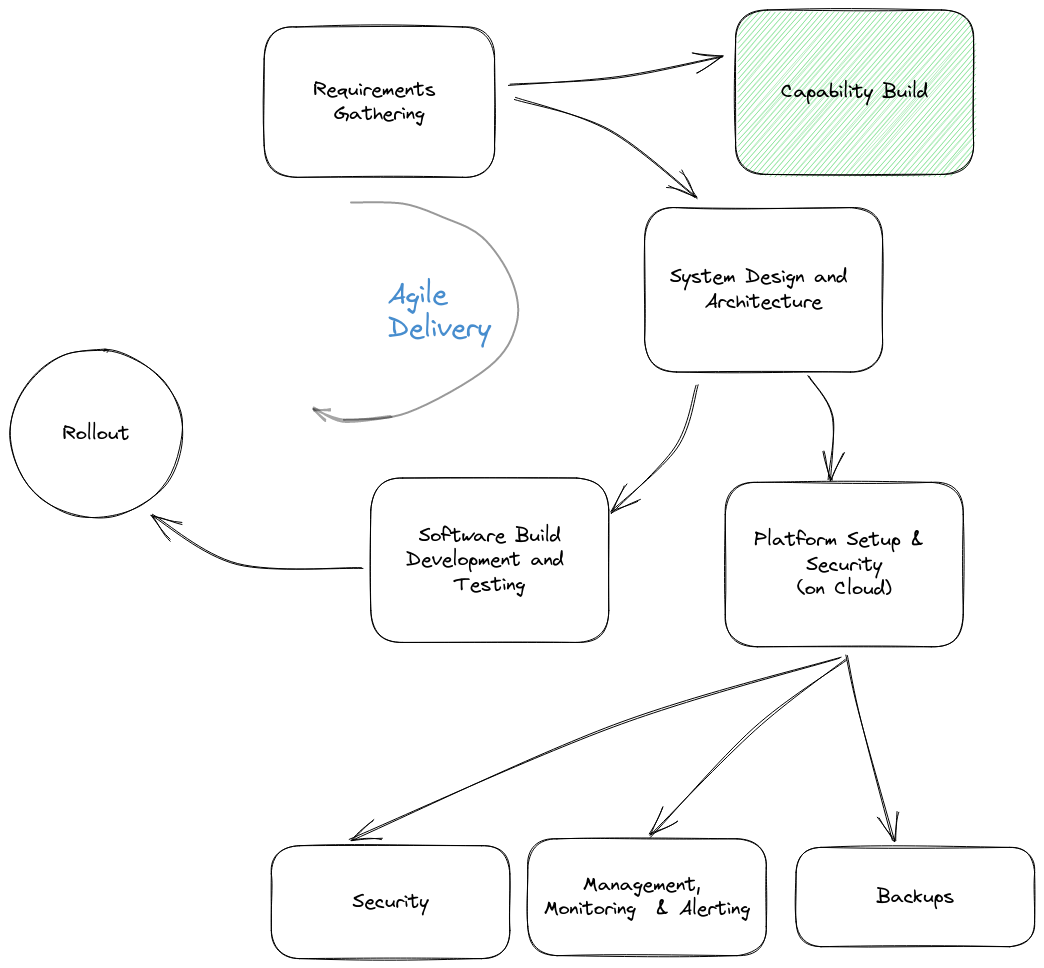
Capability Build
Build development and enhancing the skills, knowledge, and resources of individuals or organizations to meet specific objectives or requirements. It involves assessing current capabilities, identifying gaps, and implementing strategies to bridge those gaps. Through training, education, process improvements, and technology adoption, Capability Build enables individuals and organizations to strengthen their competencies and achieve higher levels of performance. It fosters adaptability, innovation, and continuous improvement, empowering entities to stay competitive and thrive in a rapidly evolving landscape. By investing in Capability Build, organizations can unlock their full potential and drive sustainable growth.
Multiple PoC’s / PoVs are undertaken and lightly documented, for inputs into Solution Design & Design decisions.
This is typically delivered as a Agile phase / scrum.
System Design & Architecture
Once the requirements are gathered, our team will design a robust and scalable system architecture that aligns with your business objectives. We will carefully consider factors such as performance, security, and scalability to create an optimal solution. Our architects and engineers will leverage their expertise to select the most suitable technologies and frameworks for your software implementation.
This is typically delivered as a Agile phase / scrum.
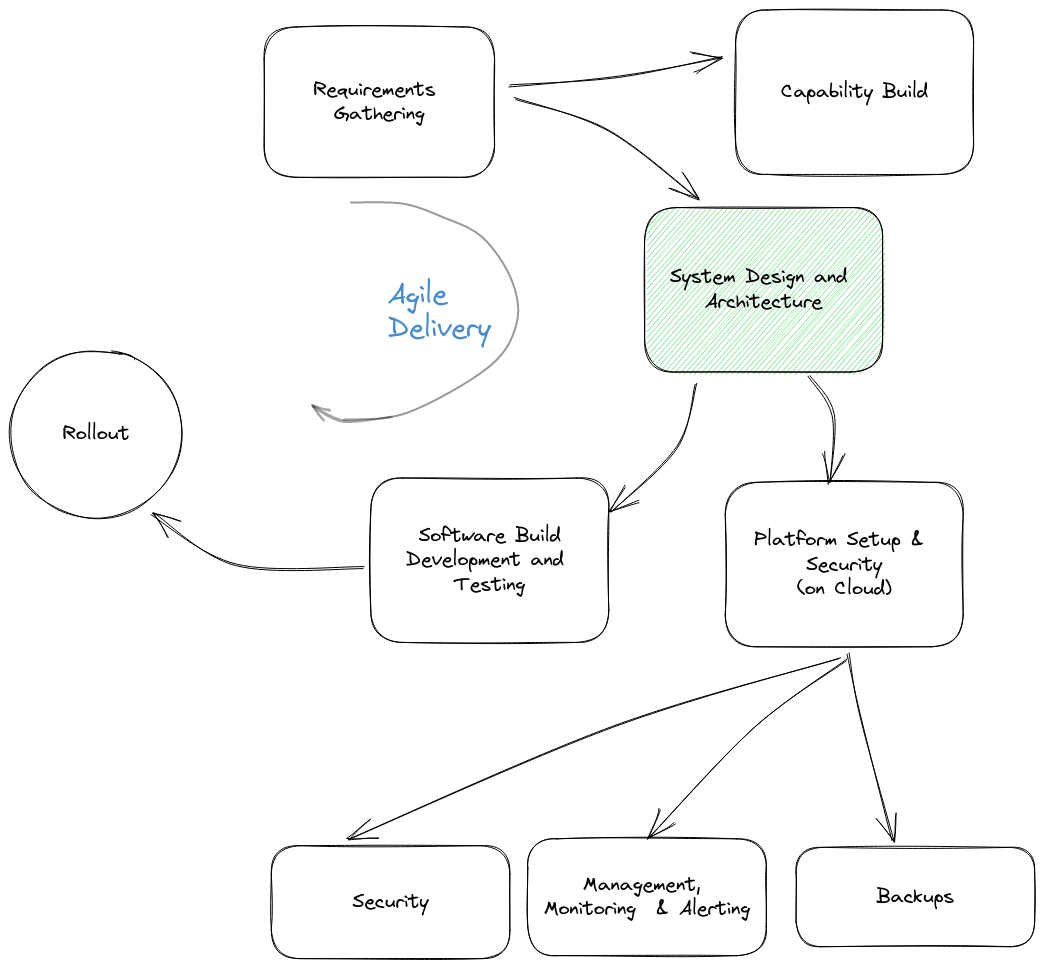
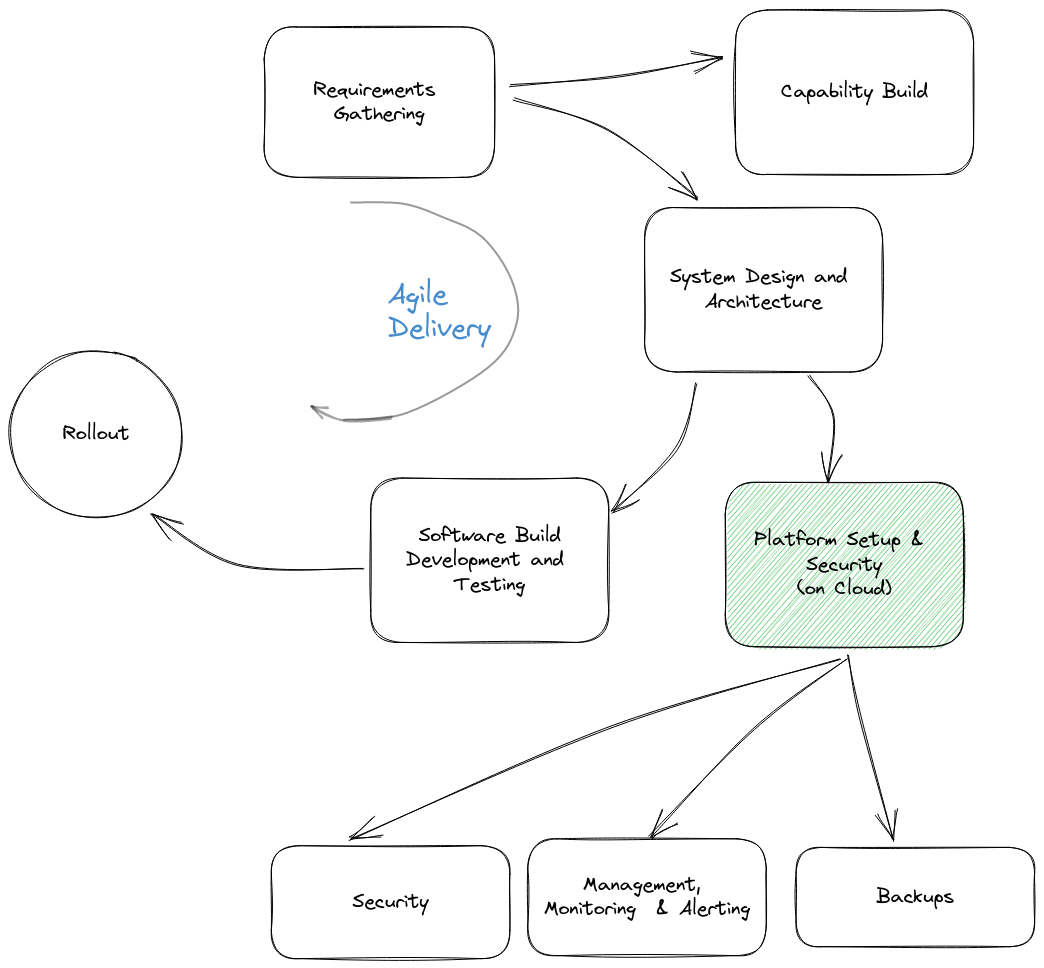
Platform Setup and Security
Once the requirements are gathered, our team will design a robust and scalable system architecture that aligns with your business objectives. We will carefully consider factors such as performance, security, and scalability to create an optimal solution. Our architects and engineers will leverage their expertise to select the most suitable technologies and frameworks for your software implementation.
System Design & Architecture
Once the requirements are gathered, our team will design a robust and scalable system architecture that aligns with your business objectives. We will carefully consider factors such as performance, security, and scalability to create an optimal solution. Our architects and engineers will leverage their expertise to select the most suitable technologies and frameworks for your software implementation.

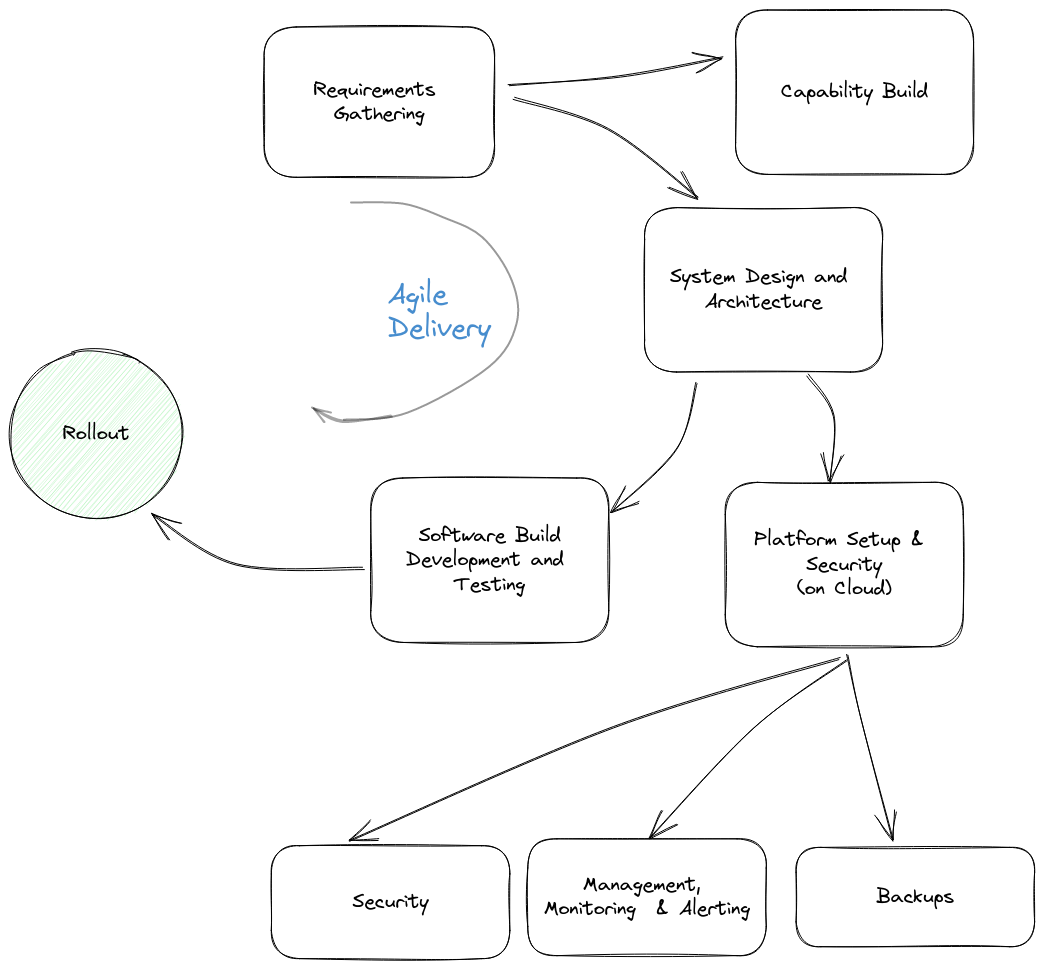
Rollout / Deployment
Once the software is developed and thoroughly tested, we will assist you in deploying it to your production environment. Our experts will handle the necessary configurations, perform integration with existing systems, and ensure a seamless transition. We will closely collaborate with your IT team to minimize any disruptions and ensure a smooth deployment process.
BIAN Capability Management
Capability Rollout
Training
We understand the importance of equipping your team with the knowledge and skills to effectively utilize the new software. Our practice offers comprehensive training programs tailored to your organization’s specific needs. Additionally, we provide ongoing support and maintenance services to address any technical issues, perform updates, and ensure the continued smooth operation of your software.
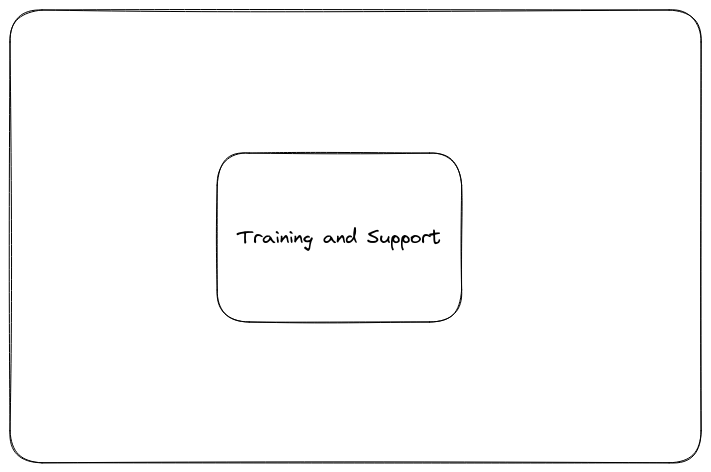

Continuous Improvement
Our commitment to your success extends beyond the initial implementation. We believe in continuously improving your software based on user feedback, changing business requirements, and emerging technologies. Our practice remains dedicated to keeping your software up to date, secure, and aligned with your evolving business needs.
Partner with us to experience a seamless and successful software implementation. Contact us today to schedule a consultation and take the first step towards transforming your software delivery process. Our team is ready to work closely with you to achieve your goals.
GENERAL QUESTIONS / FAQ
BIAN, short for – “Banking Industry Architecture Network” is a Architecture framework which promotes streamlining and standardizing of Technology in Banking industry.
The BIAN framework consists of a set of business capabilities, information entities, and service domains that cover the entire banking value chain. The framework is designed to be technology-agnostic and can be used with a wide range of software solutions and platforms.
Overall, BIAN aims to help banks improve their operational efficiency, reduce costs, and enhance their ability to innovate and respond to changing market conditions. By providing a common architecture and framework, BIAN hopes to foster collaboration and standardization within the banking industry, and ultimately, improve the customer experience.
Know more about BIAN here – https://bian.org/
BIAN’s primary focus is on developing and promoting a standardized architecture for the banking industry. Specifically, the organization aims to create a common language and framework for banks that will facilitate interoperability, reduce complexity, and enable innovation.
Many tools are available within the BIAN framework to get a BANK to this Standardization.
Post Implementation, the bank will have –
Improved agility: BIAN promotes modular and flexible system enabling quick responses to changes in the market
Reduced costs: BIAN can help banks to reduce their costs associated with system integration, maintenance, and development leading to more efficient operations and streamlined processes.
Enhanced customer experience: BIAN can help banks to provide a more consistent and reliable service to customers.
Improved risk management: BIAN provides a standardized framework for managing risk
Increased speed to market: BIAN can help banks to accelerate their time to market for new products and services
BIAN is a global organization that includes banks, technology vendors, and consulting firms. Members work together to develop and promote the BIAN framework. BIAN is led by BIAN Organization, an expert bunch of Architects in the Banking Domain
No, BIAN is not a software product.
It is a “framework” that provides a common language and structure for banking systems. Banks and technology vendors can use the BIAN framework to develop their own software products.
BIAN has been adopted by a number of banks and technology vendors around the world, but it is not yet widely used throughout the industry. However, as more organizations recognize the benefits of standardization and interoperability, the adoption of BIAN is expected to increase.
BIAN and TOGAF are both architecture frameworks, but they have different focuses and scopes. BIAN is specifically designed for the banking industry and includes a set of business capabilities, information models, and technology services that describe the functions and components of a typical banking system. TOGAF, on the other hand, is a more general framework that can be applied to any industry or organization.
While both frameworks are designed to promote standardization and interoperability, they have different approaches to achieving these goals. BIAN is more prescriptive and includes specific guidelines and recommendations for implementing its framework. TOGAF is more flexible and includes a set of generic guidelines and best practices that can be customized to meet the specific needs of an organization.
In summary, BIAN is a specialized framework designed specifically for the banking industry, while TOGAF is a more general framework that can be applied to any industry or organization.
The BIAN framework includes a set of business capabilities, information models, and technology services that describe the functions and components of a typical banking system. It also includes guidelines for implementing the framework and ensuring interoperability between different systems.
Yes, the BIAN framework is designed to be flexible enough to be used by banks of different types and sizes. It includes a range of business capabilities that can be customized to meet the specific needs of different types of banks.
BIAN is designed to be compatible with other industry standards and frameworks, such as TOGAF, OpenBanking, and ISO 20022. It is also designed to work with specific technology standards, such as SOA and REST.
No, BIAN is an Open Standard and any organization can take it and apply its principles, without any obligation to BIAN.
The BIAN framework is not licensed for commercial use. It is freely available to BIAN members and the general public for non-commercial use, such as education and research. BIAN members can use the framework to develop and implement their own software products and solutions, as long as they comply with the terms and conditions set forth in the BIAN Intellectual Property Rights Policy.
Yes, you can.
BIAN offers a certification program that provides a formal process for demonstrating compliance with the BIAN framework. This program includes a set of criteria and guidelines for assessing compliance, as well as a certification process that includes an independent audit.
Organizations that successfully complete the certification process are authorized to use the BIAN Certified logo to promote their compliance with the framework.
CC&C, who are a BIAN certified training partner, offers training and supports Certification Programs.
Connect with us at – [email protected] (or) [email protected] – to know more.
Yes, it is a very good idea to conduct a proof of concept (PoC) to understand if the BIAN framework is a good fit for your organization.
We at BridgeApps Ltd, offer this Initial BIAN Consulting / PoC build as a packaged service, which includes – identifying your current state, define a scope of the PoC based on your business priorites, identify specific business capabilities or use cases that you may use to evaluate, develop a plan and then Build the PoC on Cloud using Industry standard languages.
Connect with us at – [email protected] (or) [email protected] – to know more.
We at BridgeApps Ltd, offer BIAN Consulting / PoC build/ or BIAN delivery service, and we will be able to help you build & grow the BIAN capability in your organization.
Connect with us at – [email protected] (or) [email protected] – to know more.
Specialists on BIAN Consulting, Training & Delivery
Leverage our expertise to get faster development churn, time to market and more importantly achieve agility. Reach out to us to find the art of the possible.
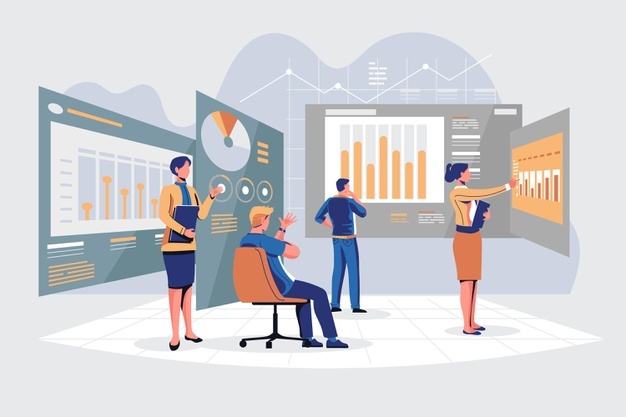
Microservices - Your Solution as a Collection
Building Microservices based solutions for your business – either a Web based Portal or a Business functionality with no UI or a Business Rules Engines (BRMs) based solution implementing Rules and hosted on Cloud and secured using SSO or other Auth mechanisms.

Integrate Microservices on Cloud with OnPremise
Migrating existing Applications which are on-Premise or on Legacy technologies, into a fully Microservices based Architecture as atomic functionality driven desparate services interacting with each other via APIs, and secured using Key exchange based solutions.